
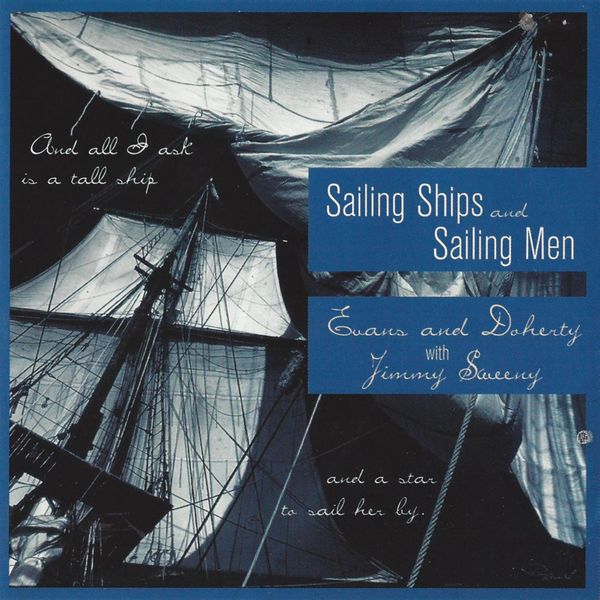 |
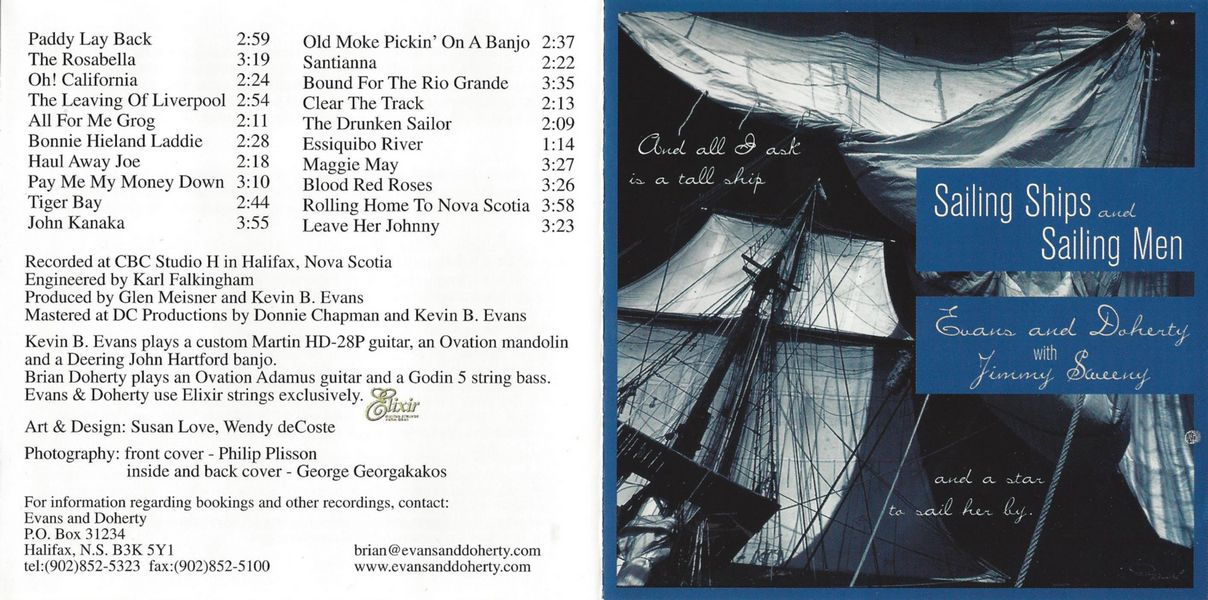
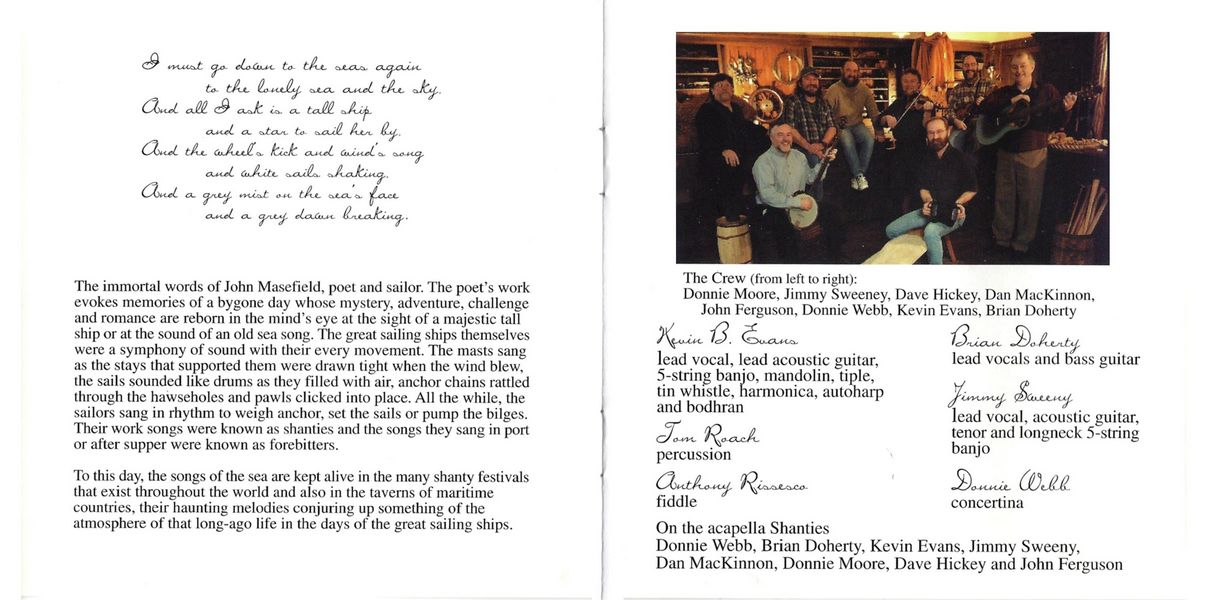
|
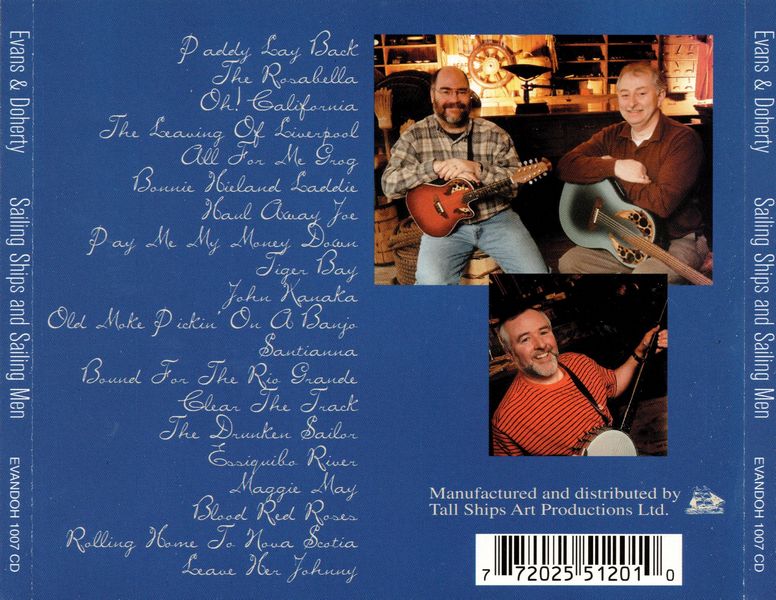
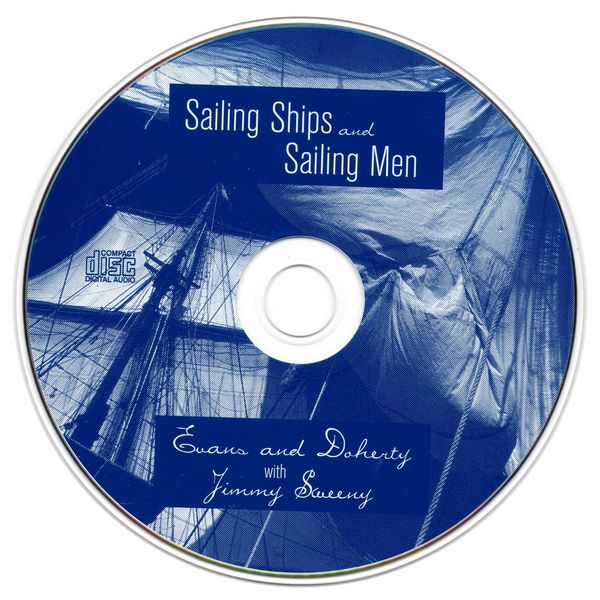
|
| more images |
Sleeve Notes
The immortal words of John Masefield, poet and sailor. The poet's work evokes memories of a bygone day whose mystery, adventure, challenge and romance are reborn in the mind's eye at the sight of a majestic tall ship or at the sound of an old sea song. The great sailing ships themselves were a symphony of sound with their every movement. The masts sang as the stays that supported them were drawn tight when the wind blew, the sails sounded like drums as they filled with air, anchor chains rattled through the hawseholes and pawls clicked into place. All the while, the sailors sang in rhythm to weigh anchor, set the sails or pump the bilges. Their work songs were known as shanties and the songs they sang in port or after supper were known as forebitters.
To this day, the songs of the sea are kept alive in the many shanty festivals that exist throughout the world and also in the taverns of maritime countries, their haunting melodies conjuring up something of the atmosphere of that long-ago life in the days of the great sailing ships.
Paddy Lay Back — Many of the great early shanties originated with the Irish or Liverpool-Irish seamen who manned the packet ships in the 1820-1840 period. These ships were used mostly for bringing emigrants to the New World. This was a favourite song with the packet-rats who sang it both as a forebitter and a capstan shanty. It later became popular with sailors working the saltpetre trade around Cape Horn in Chile — hence the words of the chorus.
The Rosabella — Seamen took great pride in the ships on which they sailed and were not slow to put their feelings into song. This is an outward-bound song and has a wonderful chorus for singing along.
Oh! California — Sailors utilized the black-minstrel songs of the day and reworked them as shanties. Oh! Suzanna by Stephen Foster is the melody used here. The song tells of a trip to the gold fields of California in 1849 when gold-fever sent thousands of adventurers to the new boom-town of San Francisco, by way of deadly Cape Horn.
The Leaving of Liverpool — Most poor sailors had to leave their loved ones behind for long periods of time. It's little wonder that sailing day was a sad occasion for everyone involved. This lovely old forebitter catches the mood perfectly.
All For Me Grog — In their off-watch hours, the crew would sing forebitters around the foc'slehead of their ship. These songs were not work songs, but songs of diversion to boost morale, overcome loneliness and make a hard life at sea a little more tolerable. It's no small wonder that many seamen looked to alcohol as an escape from a life of such drudgery and deprivation. In this song, Sailor John is willing to pawn his very clothes in order to get some liquor.
Bonnie Hieland Laddie — Seamen working the cotton-loading trade in southern U.S. ports during the winter months, would head north to Canada in the spring and summer months to work at the timber trade in Quebec and the Maritime Provinces. With a little adaptation, songs suited by rhythm to the loading and screwing-down of cotton could be used successfully for the hauling and loading of timber.
Haul Away Joe — This shanty was mostly used for hauling tacks and sheets. For longer drags at halyards, the song was lengthened to suit the purpose. Stan Hugill, the last of the old shanty-men, states that it was usually sung with an Irish or mock-Irish accent.
Pay Me My Money Down — In the West Indies, they had a tradition of shore work songs for moving houses, etc. Many of these were fitted with more nautical words and brought to sea by the black seamen who were an integral part of many of the crews aboard the old sailing ships. This particular one concerns the amorous adventures ashore of Sailor John in Kingston, Jamaica.
Tiger Bay — This is another song of Jack's adventures with the flash girls ashore. This is a very rare song, sung to a variant of the Irish song "The Spanish Lady". For the original chorus, we have substituted one we heard sung to the same air by the great Dublin ballad singer, Frank Harte. Wellclose Square in London was known as Tiger Bay.
John Kanaka — In his travels over the Seven Seas, Sailor John always picked up new native tunes from the various ports he visited. These he adapted for his own usage at sea. Kanakas were seamen of Polynesian origin.
Old Moke Pickin' On A Banjo — The great age of sail parallels the opening up of the interior of America by the railroad companies. Irish and black labourers did most of the work on these new railroads. Many of their work songs made their way to sea and contained elements from both native musical traditions. In fact, a great many shanties evolved from this potent combination.
Santianna — There are a number of variants of this very old brake-windlass shanty. Our version, sometimes known as "The Plains of Mexico" sings of Sailor Jack's legendary prowess among the gay Spanish Senioritas in South American ports.
Bound For The Rio Grande — This was one of the best loved of all shanties in the age of sail. It was an outward-bound shanty sung a the start of a voyage when men heaved together at the capstan to haul up the anchor. It has a beautiful melody. The Rio Grand River was in Brazil.
Clear The Track — This capstan shanty started out life as the Irish folk-song, Shule Agra. It was taken up by the black cotton stevedores of the southern ports of America who added their own words before sending it off to sea again. Bulgine was an American-Negro slang word for a steam engine.
The Drunken Sailor — Nearly everyone knows at least one verse and the chorus of this fine old stamp'n'go shanty. It suggests, in a comical manner, many rather extreme measures for sobering up poor Sailor John after a run ashore. The melody is believed to have derived from an Old Irish fiddle tune. It was mostly sung aboard ships with a bigger crew when the men sang in chorus as they stamped down the deck, holding a rope as they hoisted a sail.
Essiquibo River — The Essequibo River is in French Guiana on the eastern seaboard of South America. The song was used as a halyard shanty and extols, in exaggerated pride, the virtues of the place and its inhabitants. We have used percussion on this track to emphasize the wonderful South American rhythm of the song.
Maggie May — This old favourite, from Liverpool, England, was sung both as a shanty and a forebitter and sings of one of the flash girls of the town who was transported to Botany Bay for "the playing of the game".
Blood Red Roses — Whaling was one of the toughest careers that a sailorman could follow in the days of sail. It involved long absences from home, perilous, life-threatening contests against huge whales, oftentimes freezing conditions amidst ice and snow — and all for very little profit at the end of a trip. This find old halyard shanty comes from the whaling trade.
Rolling Home To Nova Scotia — This song was always sung aboard ship in a foreign port before the voyage home. It is one of the most popular of the homeward-bound shanties. In keeping with true seafaring tradition, we have taken the liberty of localizing the home port.
Leave Her Johnny — This shanty was reserved for the last task aboard ship at the end of a voyage when the ship was docking and just before the crew went ashore. This was a sailor's opportunity to express freely, his true opinion of his ship and officers, the food, wages and the cruel treatment aboard.